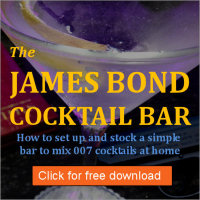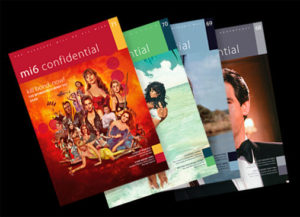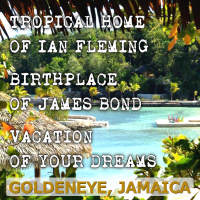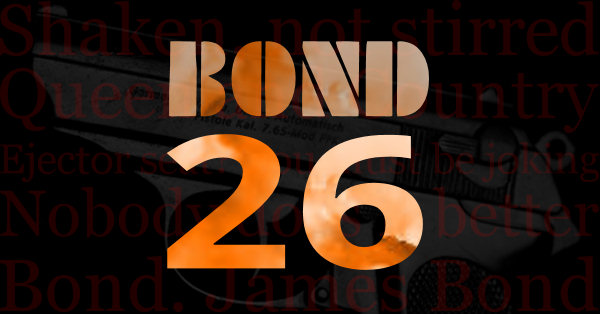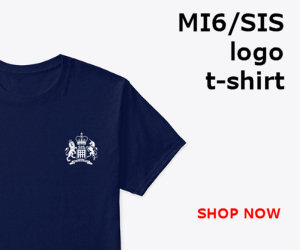You Only Live Twice takes readers on a journey through the exotic culinary culture of Japan, with a wide range of food and drink that help make the story come alive.
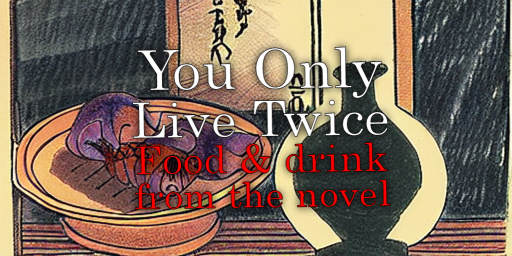
Ian Fleming’s twelfth James Bond opens with James Bond drinking saké at a Geisha party in Japan. The party has been arranged in his honour by Tiger Tanaka with Bond a month into a diplomatic mission to Japan. He has been temporarily been assigned the code number 7777 for this mission in place of 007 as his assignment shouldn’t require the use of his licence to kill.
By the time to story starts Bond has already downed five flasks of saké and has been challenged by the head of the Japanese Secret Service to play stone, paper, scissors.
The party has been going for a couple of hours by now and Bond is growing weary of the forced politeness and fake smiles and demands more saké, but in a tumbler. Twice he downs an entire tumbler, requiring more saké to be brought as he faces Tiger. Again he downs it before agreeing to play three games of three, which he wins.
At the end of the first chapter Bond and Tiger sit down in his house. The paper partitions are all opened up to ensure they are not spied upon. They sit down to more saké as Tiger is about to make an important proposition to James Bond.
Grouse and pink champagne
A month earlier Bond had been called into M’s office for the first time in weeks. He’s being given his last chance to redeem himself after bungling his two previous two missions. He needs to convince Tiger Tanaka to allow Britain access to Russian cipher traffic cracked by Japan.
After being dismissed he asks Miss Moneypenny to call his secretary, Mary Goodnight, and tell her to make sure she is free that evening.
“I’m taking her out to dinner. Scotts. Tell her we’ll have our first roast grouse of the year and pink champagne”, he explains.
A week after receiving his instructions from M, Bond is aboard a Japan Air Lines Douglas DC-8 destined for Tokyo. Flying out of London Airport (now London Heathrow), as soon as the flight reaches cruising height he orders “the first of the chain of brandies and ginger ales that was to sustain him over the Channel, a leg of the North Sea, the Kattegat, the Arctic Ocean, the Beaufort Sea, the Bering Sea, and the North Pacific Ocean”.
“Serious drinking” in Tokyo
After being collected by “Dikko” Henderson at Tokyo’s Haneda airport (now Tokyo International Airport) the Australian tells Bond that after he’s checked into the Okura hotel they’ll do some serious drinking. “Had some dinner?” he asks.
“About six of them, as far as I can remember. J.A.L. certainly takes good care of your stomach”, Bond replies. That evening they do some unspecified “serious drinking” in the Okura’s Bamboo Bar.
Dikko asks Bond, “Why did you choose the willow-pattern route? How was the old ruptured duck?”
A couple of things to interpret there. This isn’t the only time Fleming refers to the “willow-pattern route” – he also uses it in his travelogue, Thrilling Cities – but it doesn’t appear to be in use elsewhere. Willow pattern refers to the elaborate blue and white patterns on Chinese ceramics, so it seems like he’s using it to refer to routes operated by JAL.
The “ruptured duck” Dikko refers to is JAL’s red logo, which actually depicts a crane. It was first introduced in 1959 and after being dropped in 2002 was revived in 2011. In Japan a crane is a symbol of long life, prosperity and good health, while red is the colour of happiness.
The design used on the United States Honorable Service patch and lapel button was commonly known as the “ruptured duck”. These were issued to WW2 service personnel on discharge and although the design depicts an eagle, many thought it better resembled a duck. Dikko is conflating this with the rather similar JAL logo.
Bond’s first full day in Tokyo is spent sightseeing and getting cards printed for his cover, working for Dikko at the Australian Embassy. That night the Aussie takes him to his favourite bar, Melody’s on the Ginza. Here we learn that both men are on their eighth flask of saké and Dikko had “laid a foundation of Suntory whisky in the Okura” while Bond was contacting HQ. After downing a “ninth pint of saké ” he tells Bond they’ll go for eels and “a serious bottle of plonk”, and finish off the evening at The House of Total Delight – presumably a brothel.
The next day Dikko has a serious hangover. Arriving to collect Bond from his hotel he heads to the Bamboo Bar and orders a double brandy and ginger ale. He then drives Bond to Tiger Tanaka’s HQ.
Turning Japanese
The story returns to Tiger’s house after the geisha party. Bond takes a drink of saké while Tiger pours himself a Suntory with a splash of soda. After making small talk he raises the subject he wanted to discuss. In order for Britain to earn access to the Russian cypher traffic, Bond must kill a certain Dr Shatterhand, the “death collector” with his castle and “Garden of Death”. While explaining all this Tiger pours Bond more saké and serves himself more Suntory.
By four in the morning Bond is feeling sleepy. He downs his saké but when he attempts to leave Tiger tells Bond he is now under his direct command and they will be leaving Tokyo by train for Fukuoka in the morning. There Bond will kill Dr Shatterhand in his Castle of Death.
But first they go to a bathhouse where Bond begins his transformation to Japanese miner, with walnut stain to darken his skin and a Japanese style haircut. He is promised to be awakened with eggs and bacon with coffee and later on the train Bond eats slices of raw octopus with rice.
Leaving the train at Gamagori they take the hydrofoil to Toba where they stay for the night. Tiger tells Bond he is happy with Bond’s progress and has ordered saké and lobster for dinner. When the saké arrives Bond downs his tumbler in one. Tiger then tells Bond he should lift his glass for it to be topped up by the waitress.
They are then served a lobster along with lacquer boxes of rice, raw quails’ eggs in sauce and bowls of sliced seaweed. Bond is first surprised to find the lobster is raw, and then shocked when it scuttles off his plate to learn it is still alive.
He asks for his glass to be refilled as he feels it will “give him strength to try the seaweed”.
Massaging the cow
After visiting the Outer Shrine of Ise, one of the most important shrines in Shintosim, Bond’s next lesson in Japanese culture is delivered in the rural hamlet of Wadakin. Here Bond is handed a bottle of beer and instructed to give it to the cow.
Once the cow has finished drinking Bond is handed a bottle of shōchū (a liquor usually distilled from rice or other ingredients between 25% and 35% ABV) and told to fill his mouth with it, spray it over the cow’s back and then massage the cow!
Afterwards they drive to a nearby restaurant where Tiger orders saké . Bond is pleased to be sitting in Western chairs with a table for a change. He asks Tiger about the ritual with the cow.
“You are about to eat what it was all about”, says Tiger before they tuck in to a meal of Kobe beef “of a grade you wouldn’t find in the most expensive restaurant in Tokyo”.
Accompanying the steak are various accompaniments, including a saucer of blood. Bond refuses it but finds the steak “without equal”.
During their meal Tiger tells Bond they are headed next to one of the Japanese secret service’s training establishments. There Bond continues his education with demonstrations in the art of the ninja before setting off for Kyoto.
That night Bond is left to his own devices in “the smartest hotel in Kyoto, the Miyako” where he orders a pint of Jack Daniels and a double eggs Benedict from room service. Bond watches a Japanese detective show on TV and then, exhausted from the day’s events, sleeps for twelve hours and wakes with a hangover.
The next morning Bond’s spirits are lifted temporarily when Tiger tells him they are to visit the “oldest whore-house in Japan”, before driving to Osaka. However, Bond is disappointed to learn the establishment is now a national monument rather than a functioning brothel.
They depart Osaka aboard the Murasaki Maru for the southern island of Kyushu. The modern 3,000 ton ship has “all the luxuries of an ocean liner” as they cross the Inland Sea for their destination.
The art of the haiku
In the first class dining room they eat “hamlets” – ham omelettes – naturally washed down with saké. During the meal Bond receives a lecture on Japanese culture, introducing him to the poet Bashō and the art of the haiku. Tiger presses Bond to try writing one himself.After spending some time with pen and paper he produces one to Tiger’s delight:
You only live twice:
Once when you’re born,
Once when you look death in the face.
Naturally, after all that effort he asks for more saké, which Tiger immediately arranges.
When they disembark at Beppu at sunset Tiger tells Bond it’s the perfect time to see the “famous geysers and fumaroles” of the spa town as they needed to make an early start for their final destination. Afterwards Tiger tells Bond he has arranged a “fugu feast” as a special treat.
“Fugu is the Japanese blow-fish”, Tiger tells him before continuing to explain “its liver and sex glands contain a poison which brings death instantaneously”.
After checking into an inn they relax in the sulphur baths before heading out to the restaurant. It is decorated with a giant blow-fish above the door but Bond is glad to see it has western tables and chairs. After downing five flasks of saké he tells Tiger he is ready for the fish and, if it kills him, it’ll be doing Dr Shatterhand a favour.
When the fugu is finally served he finds it tastes of nothing, “not even fish”. He does however make a show of appreciating it as Tiger, who was “smacking his lips over each” morsel, expected it of him. When more saké arrives Bond finds it contains raw fugu fins.
A familiar face
The next morning they depart for Fukuoka at six in the morning. The journey turns out to be rather eventful after Bond spots they are being tailed. At the local police department Bond examines aerial photography of the Castle of Death, concluding that it would be as difficult to storm as Windsor Castle. Told an approach from the landward side would be difficult, it is suggested to Bond that he approach from the sea from an Ama island located half a mile offshore. There he would stay with a family whose daughter, Kissy, appeared in a Hollywood film but hated it so much that she returned.
“The Ama are a tribe whose girls dive for the awabi shells”, says Tiger. “They sometimes dive for pearl oysters. They dive naked”.
After swimming ashore in a ninja suit he will scale the wall and kill Dr Shatterhand, who walks the grounds of his castle – the Garden of Death – protected by a suit of chainmail with a winged helmet worn by Japanese warriors. Examining a photo of the eccentric doctor, Bond first realises that Shatterhand is, in fact, no other than Ernst Stavro Blofeld.
Afterwards Bond prepares for his assignment. He tries on the ninja suit and puts together a kit of black fins, some pemmican-like meat, Benzedrine tablets and a plastic flask of water. He ponders his revenge on Blofeld armed only with his bare hands, a pocket knife and a thin steel chain.
Later a police launch takes them to the Ama island of Kuro. Tiger produces “sandwiches and a flask of saké” as they head southwards along the coast.
Living among the Ama
Arriving on Kuro Tiger tells Bond that while the priest knows the truth of his stay on the tiny island the villagers believe he is an anthropologist staying there to study the Ama way of life. While there he is to row Kissy’s boat out to sea each morning so that she can dive for awabi. “Fifty would be good. A hundred would be wonderful”, she tells him.
On his first morning Bond rises at 5:30 and has bean curd – tofu – and rice for breakfast washed down with tea. He watches the dawn from the front step as he eats.
Before going out in the small boat Bond is introduced to David, who turns out to be a cormorant. Named after David Niven, who Kissy explains was the only person in Hollywood to treat her well, Bond concludes the bird is “one of the famous fishing cormorants of Japan”. However, Bond is disappointed that she wears a white cotton dress to preserve her modesty.
They spend the day diving for awabi, with Bond trying his hand after Kissy reaches twenty-one shells. Later they break for a lunch of rice with bits of fish and dried seaweed, which Fleming tells us tastes of salty spinach. By the end of the day they have managed a haul of sixty-five awabi, of which Bond was responsible for ten. The following day that increases to sixty-eight “largely thanks to Bond’s improved diving”. But that evening Bond is in agony with stomach cramps. Sissy’s solution is to make him lie face down on his futon while she walks up and down his back, bathed him and then rubbed milk into his sunburn.The following morning she gives him an egg beaten up in his rice and bean curd as a treat. That day they go to shallower waters near the castle and Bond manages twenty-one awabis.
On the fourth day Kissy takes Bond to the other side of the island to see the six “Guardians”. These are five rough stone statues on the low tide line, with a sixth eroded by the elements over the centuries. They are perhaps inspired by both the Japanese Jizo statues and the Easter Island statues as they seem to possess elements of both without matching either.
Fleming tells us that “Kissy collected their usual lunch in a small basket”. Presumably that means rice with fish and seaweed. On the way to the guardians Bond gets a good view of Blofeld’s castle just across the strait from the island’s high point. He tells Kissy he plans to set off for the castle that night. Against his protests she insists on swimming with him across the strait.
Into the garden of death
After guiding him across the strait Kissy returns to Kuro while Bond, dressed in his ninja suit, climbs the castle wall. Once inside the garden of death he finds somewhere to shelter – a gardener’s hut – then goes out to reconnoitre the land. While doing so he comes across various deadly flora and fauna and witnesses the demise of a visitor to the garden. Noticing the strong smell of sulphur Bond watches as another victim is consumed by the hot mud of a fumarole.
After waking in the hut Bond breakfasts on pemmican and water while he craves a cigarette. From there he watches Blofeld’s men going about their business in the garden and spies on Blofeld and Irma Bunt as they make their rounds until six o’clock when he eats “a large wedge of the highly flavoured pemmican” washed down with water and finally chances a cigarette – it might be his last.
Actually, it almost is Bond’s last cigarette. Somehow he survives Blofeld and is rescued from the sea by Kissy and returns to the Ama village suffering from amnesia while back in London he is missing, assumed dead.
Kissy nurses Bond back to health but his memory doesn’t recover. After a day on the mainland where she buys a love potion consisting of toad sweat and dried lizard and a pornographic “pillow book” to help Bond recover his libido. On her return Kissy prepares “a highly spiced dish of sukiyaki, the national dish of beef stew” to help mask the flavour of the love potion.
It seems to have worked.


